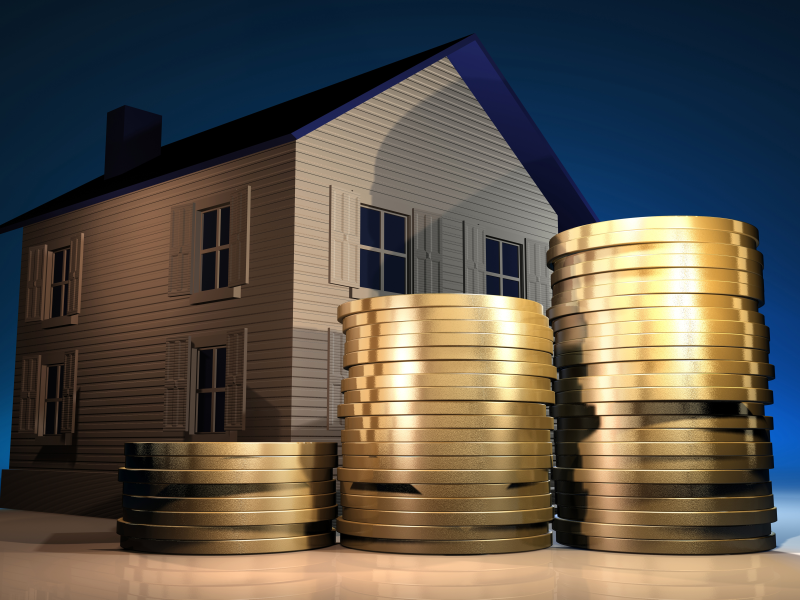

As the Bank of England announces it is putting interest rates up for the first time in 10 years of between 0.25% and 5%, speculation and predictions have been rife over what impact this will have on the housing market.
Although not a huge increase, the shift is likely to leave some people worse off – particularly borrowers, who Prolific Mortgage Finance MD Lea Karasavvas believes will be in for a shock with the news. “Mark Carney has handed a generation of borrowers, who have never experienced a rate rise, the fright of their life,” she said today.
“But if he hadn’t, Halloween would have been only the second scariest event of the week,” she continued. “The Bank faced a terrifying loss of confidence if it balked again, after one of the most hyped run-ups to a rates decision in history. The market, convinced it was coming, had already voted with its feet. The pound had climbed, swap rates had risen and every lender bar Nationwide had increased interest rates in anticipation.
“Historically, inflation of 3% has been the magic number to trigger rises and this has been borne out again.”
Lucy Pendleton, founder director of independent estate agent James Pendleton, added: "Anyone not on a fixed-rate deal will likely be witnessing something they've never seen before; the rising cost of monthly repayments.”
However, like many, she stresses that the news should not be a huge surprise to anyone and that buyers have prepared themselves for the pick-up in inflation, meaning there should be no slowdown in the market.
"Buyers are savvy and won't be thrown by this,” she said. “Most have been telling us they have already factored in an entire percentage point rise over the course of the next year.
"That's a direct result of the will-they-won't-they uncertainty that has been created by the Bank repeatedly kicking the can down the road. This small increase won't move the market and will actually give buyers more certainty about the direction of travel."
Improve not move
Last year saw a 6% increase in home improvements that required planning permission across the UK, with more than 100,000 applications submitted to London planning authorities alone. Huge growth in remortgages were also reported in October this year, pointing towards a number of homeowners opting to stay put and take on home improvements rather than move - a trend that could prove beneficial to DIY, home and garden retailers.
Of the impact the rate increase is expected to have, Ms Karasavvas said: “Homeowners knew the writing was on the wall. We normally expect fairly equal numbers of remortgages compared with new purchases, but we saw remortgaging running at 90% of all mortgage activity in October.”
She continued: “That represents a massive flight to safety for those already on the housing ladder and not a hugely encouraging vote of confidence on the demand side. Consumer confidence fell last month so I expect we’re going to see this kind of sentiment continue to filter through the broader economy.”
Property prices on the up
Meanwhile, real estate firm Savills has forecast that average property prices in UK will rise by 14% over next five years, although just 7.1% in London.
UK house price growth is expected to slow next year due to ongoing uncertainty but will pick up again in 2019 and 2020, according to the latest forecast, reaching 14% over the five years to 2022.
Founder of housebuilding investment platform Homegrown, Anthony Rushworth believes this prediction isn’t a shock but could spell changes in the lettings market and mean good news for first-time buyers.
He said: “This is an unprecedented forecast that will alarm many, but it’s good news for first-time buyers. We know the market has been slowing significantly this year, and has fallen recently in London, but such anaemic overall growth, if correct, would provoke huge changes in our housing market, as capital gains begin to trail inflation forecasts by some margin.
“One effect may be to create massive sell-side pressure as more landlords sell up. They would undoubtedly be intimidated by years of weakened returns, on top of potential higher tax charges.”
He added: “The main risk to the UK in these circumstances is that housebuilders stop creating desperately-needed new stock, as the gross development value of schemes starts to fall alongside tightening lending. Although there has already been signs of a correction in land prices in recent months.
“The Government’s challenge in these circumstances will be to ensure this vicious boom-and-bust cycle of housebuilding is broken and residential development continues apace.”